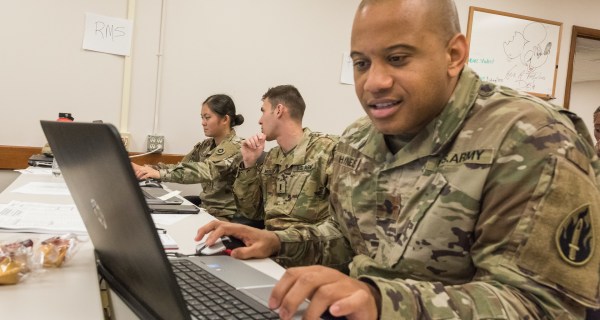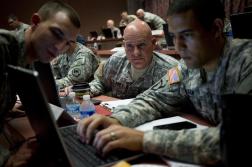For the last three years, the Army has been undergoing audit exams and getting feedback from the major independent public accounting firms on what is and isn’t ready for audit. The last audit exam will be completed in the next couple of weeks.
 The Army’s General Fund Enterprise Business System, known as GFEBS, is “the key to the Army’s auditability,” said Kristyn Jones, deputy assistant secretary of the Army for financial information management. (Photo: Dan Verton/FedScoop)
The Army’s General Fund Enterprise Business System, known as GFEBS, is “the key to the Army’s auditability,” said Kristyn Jones, deputy assistant secretary of the Army for financial information management. (Photo: Dan Verton/FedScoop)“I’m pretty confident that they will say that the control environment is sufficient for the assertion [of auditability],” Jones said. However, she cautioned that being ready for an audit “doesn’t necessarily mean that we would get a clean audit opinion on our very first go around. In fact, that would be a pretty miraculous feat.”
The work that has gone into modernizing its ERP systems has also forced the Army to think differently about data.
“With our old systems, we couldn’t use data the same way that we can with the new technology. When we needed a particular data element, we had to cram it into whatever fields were available in that system,” Jones said. “What that meant is there was no standardization, no governance, no control of that data. And as a result, it was much more difficult to rely on those systems for any kind of reporting.”
In fact, it could take the Army months to answer critical questions from senior decision makers, like how much it costs to deploy a brigade in Afghanistan or how much readiness programs cost. And sometimes questions like these couldn’t be answered at all, Jones said.
“We now have to govern how we define our data and how we use it,” she said. “And if we can do all of those things effectively, then we can rely on the capabilities of the system for our reporting.”
Jones offered some sage advice to IT contractors who might be interested in the estimated $10 billion lifecycle price tag associated with the Army’s ERP efforts. Accenture currently holds the GFEBS contract, which is up for renewal in 2015.
Want a piece of the Army’s ERP pie? Then make sure whatever you deliver integrates with the technologies and infrastructure the Army already has in place, Jones said. Every solution doesn’t necessarily have to be based on Oracle or SAP, “but it needs to recognize the backbone that we’ve built … and support end-to-end processes that relate to those ERPs,” she said.
“It shouldn’t take years to be able to develop new business intelligence reports,” Jones said. “We need to be agile. We need to have the ability to change what the mission needs are for that business intelligence [system] as the needs from our customers and our overseers … change. It’s not about the IT for us. It’s how we use it to do our business better.”
Follow @DanielVerton






